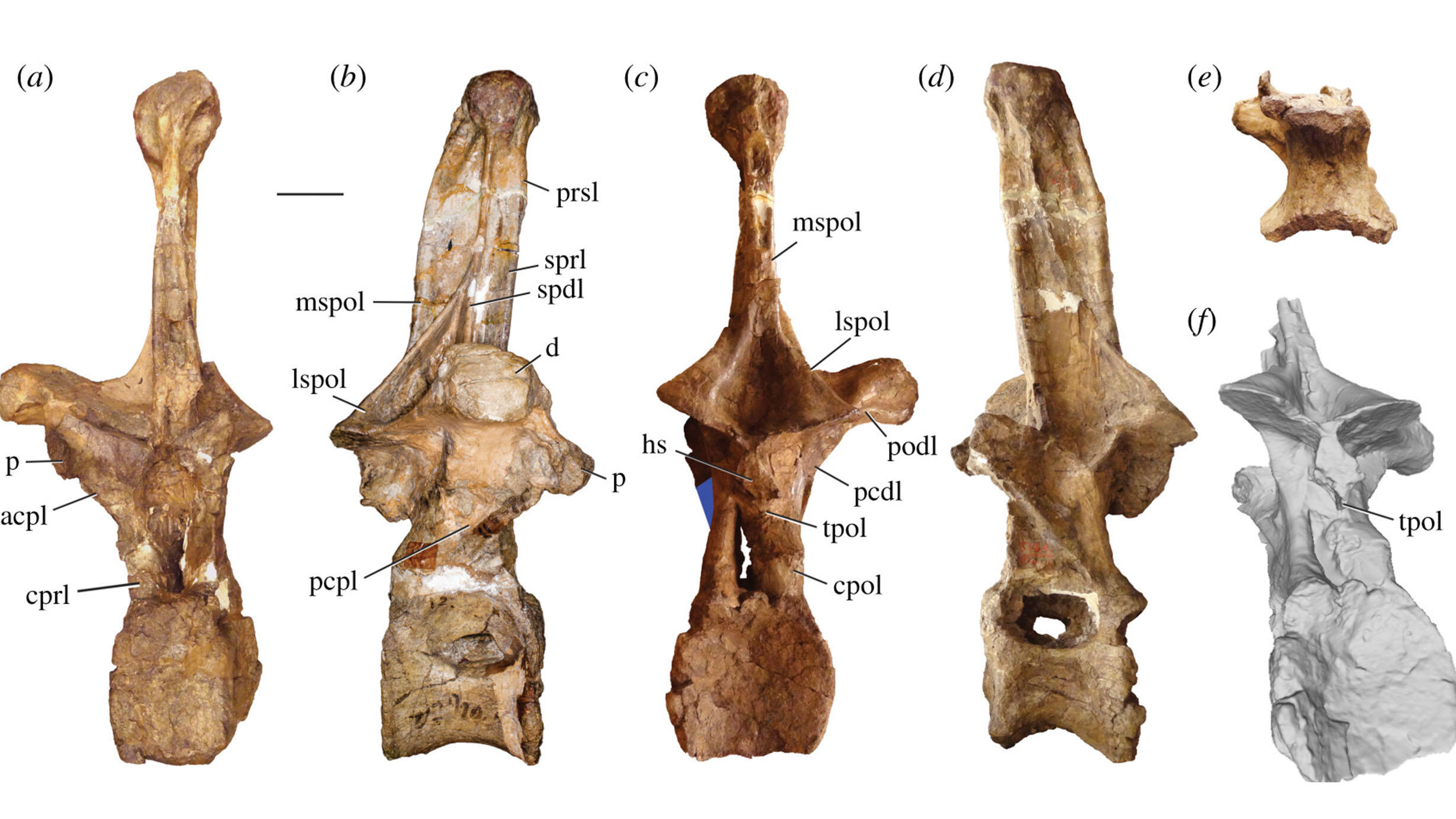 Multiple views of one of the Amphicoelias altus vertebra (AMNH FARB 5764) from the Museum’s collection. The fossil, one of the earliest recovered fossils in the collection, and three others were recently analyzed and helped confirm this sauropod was a distinct species.
Multiple views of one of the Amphicoelias altus vertebra (AMNH FARB 5764) from the Museum’s collection. The fossil, one of the earliest recovered fossils in the collection, and three others were recently analyzed and helped confirm this sauropod was a distinct species.© AMNH
Nearly 150 years ago, paleontologists described a new sauropod dinosaur—Amphicoelias altus—from four fossil bones recovered from the Morrison Formation in Colorado. The fossils were given to the Museum in 1902 and are the earliest recovered dinosaur fossils currently in the Museum's collection. But for decades, paleontologists have disagreed about whether the sauropod should be considered a new species at all.
In a recent study, Museum Research Associate Emanuel Tschopp and colleagues show that not only is Amphicoelias distinct from other sauropods like Diplodocus, but there are likely many more types of sauropods in the Morrison Formation than previously estimated. The findings were published in the journal Royal Society Open Science.
"With new views and new techniques to study the material even after 150 years, you can get a lot of new insights about these specimens."
“There had been some issues and doubts in the literature that this species wasn’t actually valid,” said Tschopp, who is a postdoctoral researcher at the University of Hamburg. But the last study that closely examined Amphicoelias’s anatomy was conducted 100 years ago, making it due for fresh analyses.
“Even though Amphicoelias doesn’t have a lot of anatomy preserved because it’s incomplete, we now have significantly better context to place that limited anatomy in,” said study co-author John Whitlock, associate professor at Mount Aloysius College and researcher at the Carnegie Museum of Natural History in Pennsylvania.
Sauropods are an iconic group of dinosaurs that are known for their small heads, long necks, and large bodies. Amphicoelias was found alongside many other sauropods at the Morrison Formation, which formed around 150 million years ago and extends from Canada to Southern Mexico.
Watch a video about Museum dinosaur fossil digs at the Morrison Formation in Wyoming.
But Amphicoelias is extremely rare in the fossil record, known from only the four fossil bones in the Museum’s collection. This has made comparisons to other sauropods challenging.
Courtesy of C. Knight/Wikimedia Commons
To determine whether or not Amphicoelias was actually distinguishable from other sauropods, the research team, led by Philip Mannion, associate professor and Royal Society University Research Fellow at University College London, analyzed the anatomical features of the bones to see if there were any characteristics that were unique. They found that three features in particular, associated with the shape of the vertebrae and femur, are not seen in Amphicoelias's close relatives, indicating that it is a valid species.
This finding solves the longstanding mystery surrounding the identity of the Museum’s earliest dinosaur fossil—and suggests that there may be more kinds of sauropods in the Morrison Formation than previously thought, leading to new questions about how they overlapped with each other in time and space.
The study authors say it also highlights the importance of museum collections all over the world, which house specimens that hold a wealth of information and remain ripe for new analyses but may have been misidentified in the past.
“With new views and new techniques to study the material even after 150 years, you can get a lot of new insights about these specimens. So it’s really important that these collections are maintained,” said Tschopp. “There is still a lot to discover.”